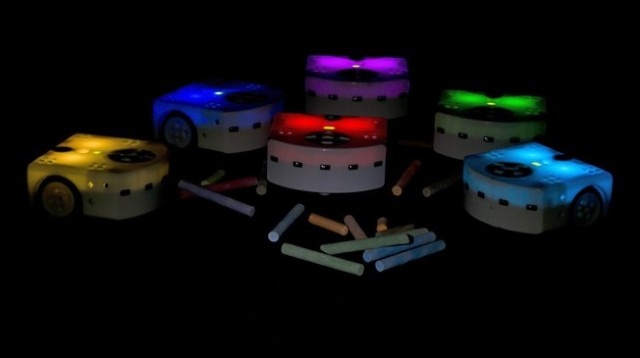Jun 6 2016
Thymio, the teaching robot designed by EPFL and widely used in French-speaking Switzerland, is now making inroads elsewhere in Europe. In France, it has been incorporated in an important initiative to teach digital sciences in nursery and primary schools.
 ©EPFL
©EPFL
The first one emerged from EPFL’s labs barely four years ago. There are now more than 14,000 Thymios in use around the world. This little teaching robot has become widely popular. In France, it has been included in a major initiative aimed at preparing teachers to teach computer skills starting with the 2016-2017 school year. This initiative, driven by the "Main à la pâte" foundation, is built around MOOCs, online resources, training courses and a 358-page guide on teaching computer skills in nursery and primary schools. A media release about this initiative was published today.
“Our robot came along at the right time,” said Francesco Mondada, a professor at EPFL’s Robotic Systems Laboratory and the founder of the Thymio project. “It taps into a broad trend in Europe in which digital sciences are starting to be taught in elementary schools.”
In March, Thymio was the focus of attention at the Cambridge Science Festival, a major event devoted to bringing science to the people. There, it was used as part of an activity jointly organized by EPFL and the Cambridge Stem Cell Institute to show how stem cells change and adapt to specific tissues. The activity vividly demonstrated the variety of fields in which Thymio can be of use.
Open data
“We designed it to be a gender- and age-neutral machine so as not to limit the ways in which it could be programmed or decorated, and we also kept the price down,” said Mondada. The robot can help teach the basics of robotics or computers, but it can also be applied to many other subjects in elementary school all the way up to high school. Numerous applications have been developed, such as exploring the five senses, teaching music, understanding the principle of force in physics, and practicing addition and subtraction. According to Mondada, more than 50 ready-to-use kits have been developed that provide all the materials and instructions necessary for teachers to run activities with their students.
Many schools in French-speaking Switzerland already use Thymio. And so far, several hundred teachers have been trained on how to work it into their classes. It is also making its way into classrooms in German-speaking Switzerland. Of particular interest is the large virtual community that has developed around the robot.
“The real strength of this project is that all the technical, pedagogical and scientific data is open source and freely available to users,” added Mondada. “Many users have added features, come up with new uses, prepared guidelines and invented totally new applications.”